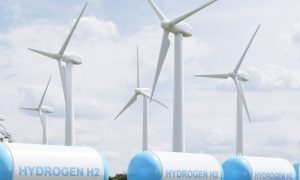India’s Green Hydrogen Push Powers Ambitious Energy Transition

India’s energy demand is projected to rise by 35% by 2030, driven by growing infrastructure needs. The country aims to generate 500 GW of non-fossil electricity by 2030, with a significant focus on green hydrogen, which is crucial for decarbonizing industries like steel and cement. India’s National Green Hydrogen Mission targets 5 million metric tonnes of production annually by 2030, with the potential to reach 10 million metric tonnes.
India’s energy demand is projected to increase by 35 percent by 2030 as its economy expands to fulfil the needs of its growing population. The demands for transport, cement, steel, copper, and aluminium will surge as the country advances infrastructure projects, say Karan Adani, Managing Director, Adani Ports and Special Economic Zone, and Sagar Adani, Executive Director, Adani Green Energy Ltd, in a column carried by the World Economic Forum.
Meeting this rising demand sustainably is a significant challenge, particularly for a developing nation with a burgeoning economy and climate commitments under the Paris Agreement, according to the World Economic Forum.
One of India’s major goals is to achieve 500 gigawatts (GW) of non-fossil electricity generation by 2030. As of August 2024, the country had already installed 152 GW of renewable energy, including 89 GW of solar and 47 GW of wind, according to the Ministry of New and Renewable Energy.
Green hydrogen, produced using renewable-powered water electrolysis, is central to India’s strategy for reducing emissions and transforming industries. It is a key component of the country’s efforts to achieve net-zero emissions by 2070.
In industries like steel, green hydrogen replaces carbon-heavy coal, cutting CO2 emissions. Similarly, captured carbon from cement production can be combined with green hydrogen to produce methanol, which is used in durable building materials like PVC. This process helps lock away carbon in long-lasting products, which is crucial for India, a country without large carbon sequestration reserves.
Recognising the potential of green hydrogen, India launched its National Green Hydrogen Mission, aiming to produce 5 million metric tonnes annually by 2030. However, with the right infrastructure and cost reductions, India could double this output to 10 million metric tonnes by the same year.
A recent report by the World Economic Forum and Bain & Company highlighted the importance of reducing the cost of green hydrogen to less than $2 per kilogramme. Key to this goal will be lowering renewable energy costs to under $0.02 per kilowatt hour and reducing the cost of electrolysers, conversion, storage, and transport.
Industrial clusters, particularly those near major ports, will be vital for scaling up green hydrogen production. These clusters bring together companies and public institutions in strategic locations, creating an environment for efficient technology adoption, shared resources, and optimised energy demand.
By integrating hydrogen production with high-emission industries like cement, steel, and fertilisers, industrial clusters will help reduce emissions while enabling the export of green hydrogen derivatives like ammonia. These clusters are also essential for securing energy independence and decarbonising India’s industrial landscape.
The Mundra Cluster in Gujarat exemplifies this approach. Located near the Great Rann of Kutch, it is just 150 kilometres from the world’s largest renewable energy park, the 30 GW Khavda facility. When completed, this facility will house solar panels and wind turbines, preventing 58 million tonnes of CO2 emissions and creating over 15,200 green jobs.
Source Link : https://www.outlookbusiness.com/planet/sustainability/indias-green-hydrogen-push-powers-ambitious-energy-transition

















